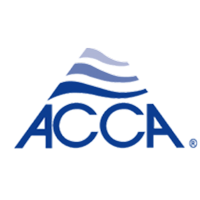
Ceiling fans are one of the most overlooked ways to enhance comfort and lower energy costs. By boosting air circulation and working in conjunction with your HVAC system, ceiling fans and energy efficiency are truly a natural pairing. They offer a smart, eco-friendly way to keep cool while lessening strain on your AC—potentially sparing you from unnecessary air conditioning repair.
In this blog, the experts at J & J Air Conditioning explain how ceiling fans can improve your comfort while avoiding energy waste with increased HVAC efficiency. We'll also offer some HVAC efficiency tips that make the most of ceiling fans.
Comfort vs. Temperature: The Effect of the Wind-Chill Effect Indoors
Ceiling fans don’t actually lower the room temperature—they make you feel cooler by blowing air across your skin. This is called the wind-chill effect, and it can make a room feel up to 4 degrees cooler without touching the thermostat. That means you feel less hot and enjoy the benefits of indoor air circulation from your ceiling fan while using less AC—helping reduce your electric bill in summer.
The Best of Both: Why You Should Use Fans and Air Conditioning Together
There are several benefits to using ceiling fans and air conditioning together, especially when it's very hot outside. By pairing both, you increase HVAC efficiency and enjoy a cooler living space with less work from your cooling system.
Why you should use ceiling fans and AC together:
- Ceiling fans help lower HVAC load by distributing cool air more evenly throughout rooms in your home. Decreasing HVAC stress is important, because it can prevent a breakdown that could lead to premature AC or furnace installation.
- Using ceiling fans enhances comfort by eliminating hot spots and improving air movement.
- Pairing ceiling fans and AC can lower your utility usage. If you have a home automation system, you can even fine-tune your smart thermostat settings to increase the temperature slightly while your ceiling fan is running.
Clockwise vs. Counterclockwise Ceiling Fan Rotation: Which Direction Should a Fan Spin?
To maximize the benefits of your ceiling fans year-round, it’s important to set the blades to rotate in the right direction for the season. The direction affects how air circulates, which can either or push warm air downward so you feel warmer.
When it's best to spin ceiling fans counterclockwise
On hot days, ceiling fans should rotate counterclockwise at a quick speed. This creates a breeze that moves air toward the floor, increasing the wind-chill effect and creating a cooler sensation.
When to rotate ceiling fans clockwise
In the winter, set your fan to spin clockwise on a slower speed. This lifts cooler air and draws warm air downward from the ceiling, so you feel warmer without changing your thermostat.
Things to Look for in a Ceiling Fan
Selecting the best ceiling fan depends on a few critical considerations, including blade design, airflow rating and room dimensions. First, look for fans that offer a good combination of ECFM airflow and blade pitch to provide efficient air circulation in your home:
- ECFM refers to how much air a fan moves—the cubic feet per minute, or CFM—per watt of electricity consumed. Fans with higher ECFM are more energy efficient.
- Blade pitch is the angle of the blades. A steeper blade pitch increases airflow but can also put extra load on the motor.
Also, consider room size when sizing a ceiling fan—a fan that’s too small won’t move as much air as you'd like, while one that’s too big may be disruptive in a smaller room.
Increase Your HVAC Efficiency With the Team from J & J Air Conditioning
At J & J Air Conditioning, our HVAC experts can help you maintain a cozy home while minimizing wear on your heating and cooling systems. From efficient ceiling fan strategies and air conditioning installation to smart thermostats and furnace repair, we offer comprehensive services that fit your lifestyle. Reserve your appointment by calling 254-505-3248 today.

